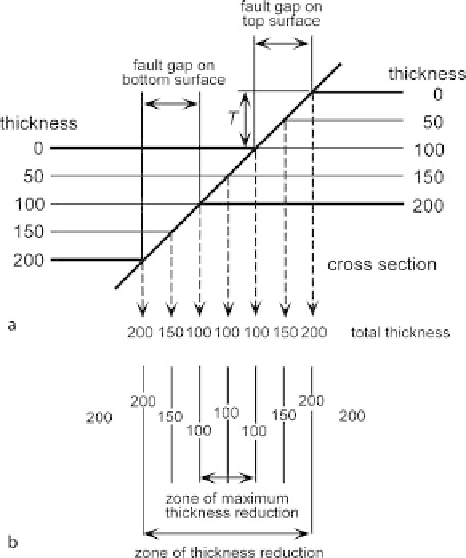Geology Reference
In-Depth Information
The Allan diagram of a complete fault may, by itself, provide all the information
needed for a reasonable estimate of total slip. It is well established that the Allan dia-
gram of a single bed cut by a dip-slip fault resembles that shown in Fig. 8.23a, with the
arrow giving the slip. Displacement-distance graphs and the bow-and-arrow rule for
fault displacement are comparable concepts (c.f., Sect. 7.5.2). Strike-slip and oblique-
slip faults will doubtless show more complex geometries. Figure 8.23b is a hypothetical
strike-slip bed geometry that approximately preserves bed length parallel to the fault
strike between the fault tips. The maximum strike-slip displacement would be at the
center and equal to the sum of the difference between the straight-line length and the
curved-bed length between the fault tips for both sides of the fault.
8.5
Faults on Isopach Maps
Faults cause characteristic thickness variations on isopach maps (Hintze 1971). If unrec-
ognized, these variations could be misinterpreted as being stratigraphic in origin. Recog-
nized as fault related, they provide a useful tool for fault interpretation. A normal fault
thins the stratigraphic unit (Fig. 8.24) and a reverse fault thickens the unit. A single fault
produces two parallel bands of thickness change (Figs. 8.24, 8.25), one associated with the
cutoff of the top of the unit and one with the cutoff of the base of the unit. The affected
width on the isopach map is appreciably wider than the fault gap or overlap on the struc-
Fig. 8.24.
Effect of normal-fault dis-
placement on the thickness
of a unit.
a
Cross section.
T
throw on the fault.
b
Iso-
pach map. (After Hintze 1971)

